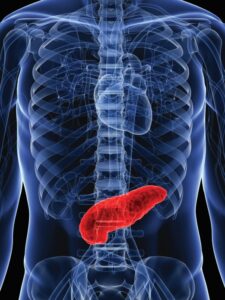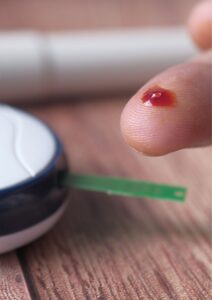Let’s dive into the incredible journey of insulin, the tiny protein that’s been saving lives for a century now.
The Beginning: A Pancreatic Puzzle

In the early 20th century, diabetes was a death sentence. There was no known treatment. All that changed in the summer of 1921 when a young orthopedic surgeon named Frederick Banting teamed up with Charles Best, a medical student. They believed the pancreas held the key to the diabetes riddle.
A Landmark Discovery: Hello, Insulin!
Banting and Best, working tirelessly in a small, sweltering laboratory at the University of Toronto, discovered insulin. They found that insulin, a hormone produced in the pancreas, was vital in regulating blood sugar. Without it, life-threatening diabetes ensued. They had stumbled upon the treatment for a disease that had confounded doctors for centuries.
First Triumph: Insulin in Action
Fast-forward to January 1922, a teenager named Leonard Thompson, severely ill with diabetes, was injected with insulin. The effect was nothing short of miraculous. Leonard’s health improved dramatically. News of this revolutionary treatment spread like wildfire.
Nobel Recognition: A Prize for the Lifesavers
In recognition of this ground-breaking work, the Nobel Prize in Medicine was awarded to Banting and John James Rickard Macleod (who provided lab space for Banting and Best) in 1923. Displaying great magnanimity, Banting shared his prize money with Best, and Macleod did the same with biochemist James Collip, who had helped purify insulin.

Decoding Insulin: The Molecular Mystery
In 1955, a British biochemist, Frederick Sanger unravelled the amino acid sequence of insulin, a significant milestone. This work was key in the synthesis of insulin and won Sanger the 1958 Nobel Prize in Chemistry.
The Era of Synthetic Insulin: A Game Changer
Fast-forward to the late 1970s. The stage was set for a game-changer. The first synthetic ‘human’ insulin was created using recombinant DNA technology. This marked a significant turning point in diabetes treatment, making insulin more accessible and affordable to patients

worldwide.
Today and Beyond: Insulin Evolution Continues
We’ve come a long way since the discovery of insulin. Today, various types of insulin, insulin pumps, and glucose monitoring systems make diabetes management more convenient than ever.
This whirlwind tour through the history of insulin is more than just a string of scientific achievements. It’s a testament to human ingenuity, the pursuit of knowledge, and the undying hope that drives us to find solutions, no matter how insurmountable the problem may seem. As we celebrate a century of insulin, we salute the many minds that made it possible and look forward to future innovations. Here’s to the next hundred years!








